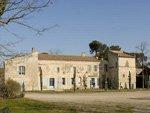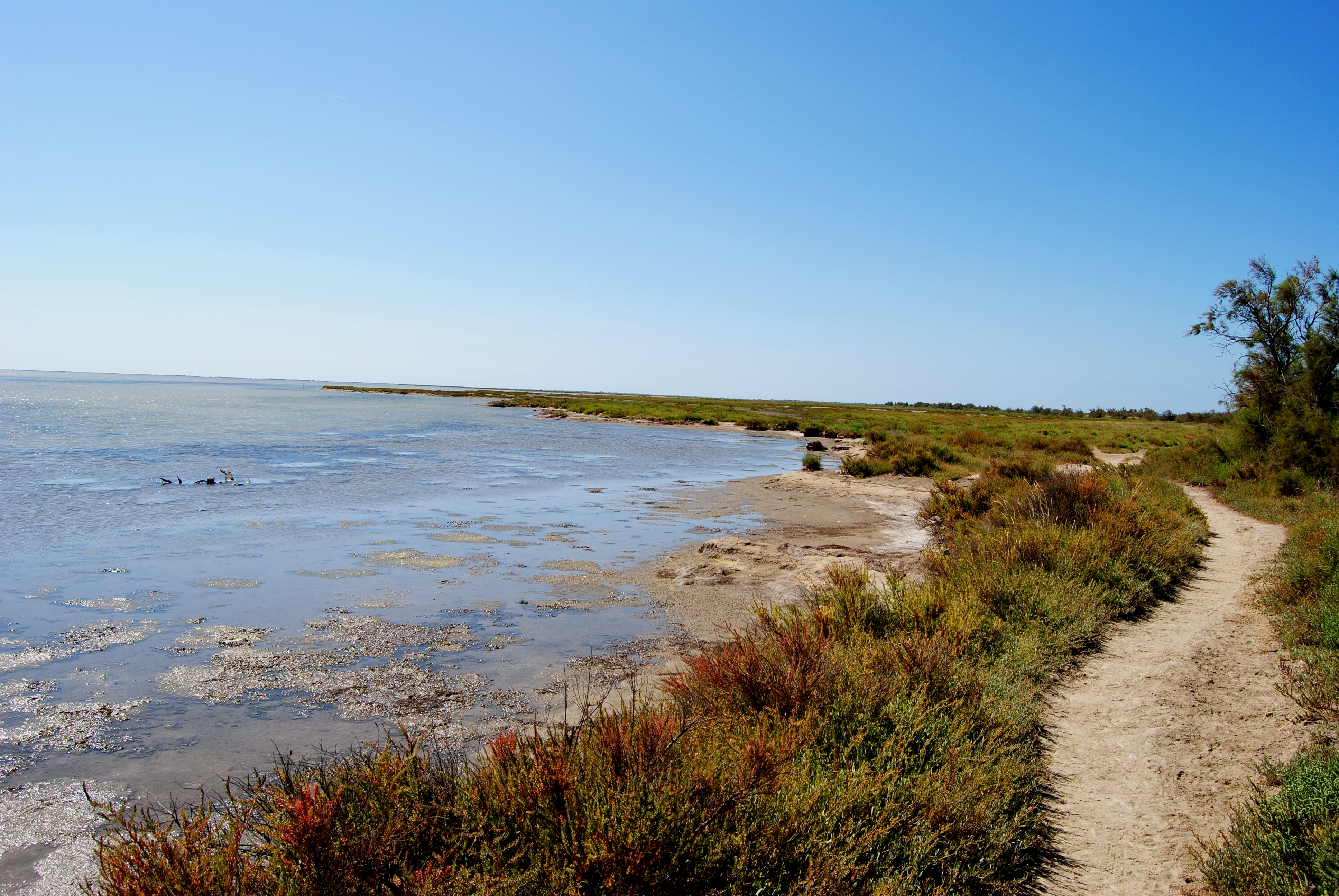
Loop between the two arms of the Rhone
17 points of interest
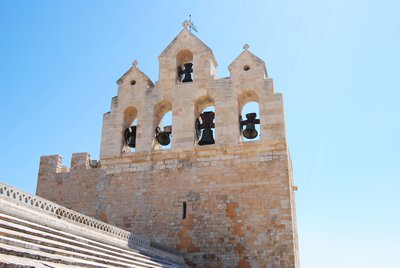
Les cloches de l'église - ©Chloé Scannapiéco - PNR Camargue  Panorama
PanoramaThe fortified church of Saintes-Maries-de-la-Mer
True highlight of the Camargue (15 m), the church offers a breathtaking view of the village and all the Camargue. The 53 steps of a spiral staircase lead to the roof of the church where the panorama unfolds in all its splendour : up there, you can take advantage of a wide angle vision on the city, the sea and the ponds. Intense and sparkling blue of the Mediterranean Sea, purple hue of the Imperial pond The wind, the sun, the view of the calm expanse of the sea invite you to discover this landscape.

Anguille sortie du filet - ©Julien Faure - PNR Camargue  Fauna
FaunaThe eel
At the graus level (or passages), communication canals between the sea and the littoral ponds, you will find fish, towards the flooded sansouïre and the ponds or towards the sea. Migrating species include mullet, sea bass, but also sea bream, sole and especially eel. Born in the Sargasso Sea, she joined the Atlantic and Mediterranean coasts after a long journey. She comes to grow in the coastal ponds or rivers where she spends several years of her life.
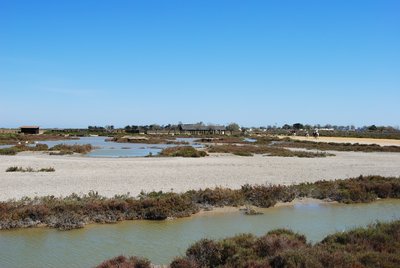
Le long de la draille de Méjanes - ©Chloé Scannapiéco - PNR Camargue  Panorama
PanoramaThe Departmental Reserve of Imperialists
Classified Departmental Reserve, Imperial and Malagroy Ponds were acquired by the Departmental Council of Bouches-du-Rhone in 1964 to protect these fragile natural environments (2,770 ha) which are home to many species of birds. The fishing, a traditional activity in Camargue, is practiced in the Imperial reserve in a boat without motor which imposes the use, as formerly, of the "partygue" (pole). Fishermen are looking for shrimps, eels.
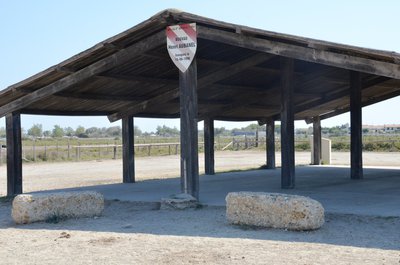
Manade Aubanel Baroncelli Santenco - ©Juliette Primpier - PNR Camargue  Patrimony and history
Patrimony and historyLe Bouvau d’Aubanel
The Baroncelli marquis, famous character of Camargue life, gave to his manade the name of Manade Santenco which means, in Provençal, manade of Saintes-Maries. At the death of the marquis, his son-in-law Henri Aubanel then manages the Santenco manade.. On June 15, 1996, the Saintes-Maries-de-la-Mer inaugurate the Henri Aubanel bouvau, a circular enclosure where bulls are grouped after selection. At the death of Henri Aubanel, his son Pierre manages the manade that he renames Aubanel Baroncelli Santenco manade.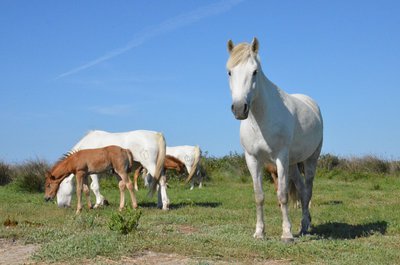
Chevaux de Camargue - ©Marjorie Mercier - PNR Camargue  Elevage et pastoralisme
Elevage et pastoralismeThe Horses of the Camargue
The Camargue horse is a very old breed (1978) and would descend from the prehistoric horse of Solutré. Symbol of the Camargue, with a gray-white dress, short ears and a shaggy mane, it is small, about 1.45 m at the withers. His dark hair of birth takes its final colour white-gray when he is around 4 years old. Raised in the Camargue, he is the companion of the guardian and the working tool for raising bulls. Breeding and reproduction criteria are strict to preserve his breed.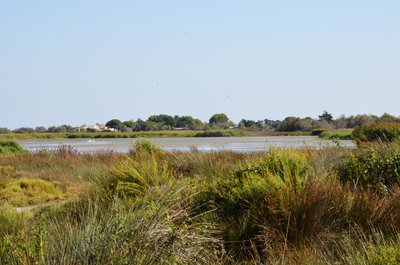
Étang des Launes - ©Juliette Primpier - PNR Camargue  Water and rivers
Water and riversLaunes Pond
In the 1920s the Saintes acquired the Launes pond so that the fishermen could exploit it, it belonged previously to the Avignon Castle estate, however the fish and the fishermen are more rare today . The environment of this pond offers exceptional natural habitats for many species. The birdlife, the fauna related to the aquatic environment, is interesting, we find colonies of Little Egret, Black-crowned Night Heron and Purple Heron.
Salicorne annuelle rouge - ©Emmanuel Vialet - PNR Camargue  Flora
FloraThe glasswort and the saladella
Named "lilac" or "sea lavender", because of its beautiful purple flowers, the saladelle is a plant of the Mediterranean shores which lines the lawns. It is an edible plant and abundant in salty soil. The glasswort is also a halophilic plant (magnet salt) characteristic of sansouïre. The leaves are replaced by small segments nested in each other. Those extremities store the excess salt and the plant gets rid of it periodically.
Ancienne gare de Magelonne - Juliette Primpier - PNR Camargue  Patrimony and history
Patrimony and historyThe old stations
A train line for passengers and goods existed from Arles-Trinquetaille to Saintes-Maries-de-la-Mer. Opened in 1892, it closed in 1953. The line was heading towards Bouchaud, crossing the drain channel of the Rousty bridge not far from the Camargue Museum, then following the Porte Ferrus road and passing through Albaron, the Avignon castle, the Paty de la Trinité and Pioch-Badet to reach Maguelonne. The terminus was reached through the Canal des Launes.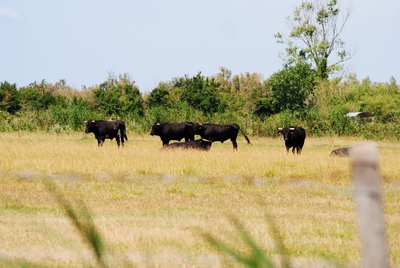
Chloé Scannapiéco - PNR Camargue  Elevage et pastoralisme
Elevage et pastoralismeBulls Manad
Several manades are established in the Camargue and include herds of Camargue bulls (Raço di Bioù). Slender and fiery, he sports horns shaped lyres. Its breeding is mainly intended for the Camargue race, also called race "with the cockade". He can be admired during ferrades, during which the anouble, a young bull of one year, is separated from the herd to be affixed a fire brand. His Spanish alter ego is for bullfighting, a true Iberian tradition.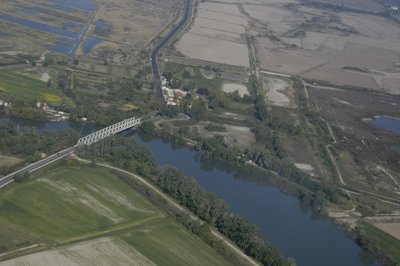
Opus Species - PNR Camargue  Flora
FloraThe Camargue Biosphere Reserve
The Camargue was classified as a Biosphere Reserve in 1977. Between these folds still partly wooded, you will find low lands occupied by lagoons lined with salt steppes, reed marshes and ponds. The agricultural lands are composed of wet meadows and grazers dedicated to the grazing of bulls and horses, old marshes converted into rice paddies of lagoons designed for the exploitation of salt and vegetable crops and viticulture on the dunes.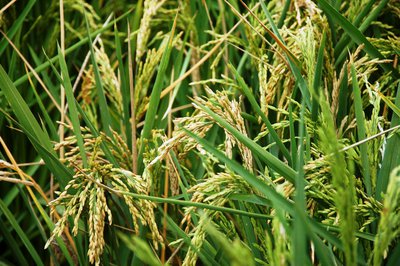
Marjorie Mercier - PNR Camargue  Produits du terroir
Produits du terroirRice fields
Rice farming has been present in the Camargue since the post-war period. Complex, this culture follows several stages: lifting, tillering, bolting, return and flowering. The land is flooded to promote the germination of rice grains and prevent the proliferation of fungi. Rice farming therefore requires freshwater irrigation and extensive drainage to develop the saltiest land. Huge amounts of water between the two arms of the Rhône (400 million m3 per year) are needed.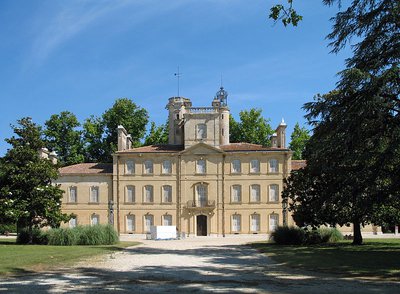
Château d'Avignon - ©DR  Patrimony and history
Patrimony and historyThe Avignon Castle
On the edge of the Petit-Rhône, the estate covers about 21 ha. While he was a farmhouse in an area hostile to the eighteenth century, Francis Joseph of Avignon d’Arlatan had built the first building. The estate underwent significant agricultural development during the industrial era and in the 19th century became a major center for irrigated viticulture. Louis Noilly Prat, a rich merchant from Marseille, brought his touch of modernity in the 1890s: electric lighting, central heating, running water.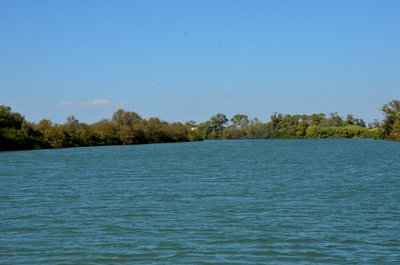
Le Petit-Rhône - ©Juliette Primpier - PNR Camargue  Water and rivers
Water and riversLe Petit-Rhône
The Petit-Rhône is an arm of the Rhône delta which marks the administrative boundary between the Provence-Alpes-Côte d'Azur and Occitanie regions, between the departments of Bouches-du-Rhône and Gard, and more symbolically between the Camargue gardoise and the great Camargue. It separates from the Grand Rhone north of Arles to reach the Mediterranean Sea near Saintes-Maries-de-la-Mer. The Sauvage ferry, the Sylvéréal bridge and the Fourques bridge ensure the crossing of the Petit-Rhône.
Sansouire ouverte - PNR Camargue  Flora
FloraThe Sansouïre
Representative landscape of the lower Camargue, the sansouïre constitutes an environment where salt exerts a total influence. She lives to the rhythm of the seasons: large body of salt water in winter, mudflats in spring and autumn, cracked ground and salt-white desert in summer. The vegetation, low and sheepish, is brown in winter, green in spring and red in autumn. Only a few specialized plant species develop there, because of the strong presence of salt: salicornia, soda, obione, saladella .
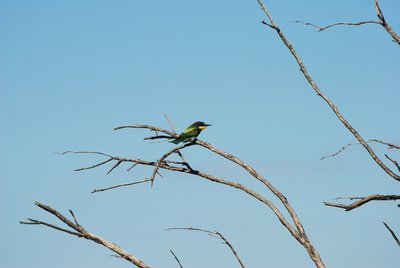
Le guêpier d'Europe - Chloé Scannapiéco - PNR Camargue  Fauna
FaunaThe European bee-eater
Brown top, blue-green underside, black-necked yellow throat, wings and olive-green tail, one would believe the bee-eater escaped from an exotic aviary. He digs his nest in the embankments or canal banks where he lives in the colony. His name comes from his diet, composed of big insects: dragonflies, beetles and wasps that he can seize without being bitten by his long beak. Agile, he crushes his victims against his perch, ejecting the venomous sting, before offering it to his little ones.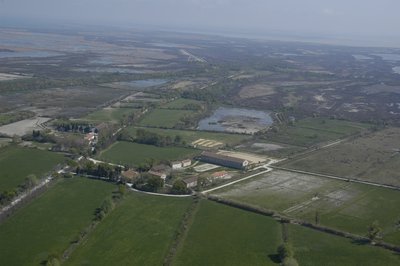
Opus Species - PNR Camargue  Water and rivers
Water and riversThe Consécanière pond
It is a place of passage and rest for many migratory birds In winter, ducks and coots find a relative tranquillity. This natural abundance motivated the need for protection by the Department of Bouches-du-Rhône as well as the Malagroy and Imperial ponds. The water level of the Consécanière pond is maintained artificially low by pumping, the pump rejecting the waters of the pond towards the Malagroy pond. The pond is surrounded by a wooded border of tamarisk.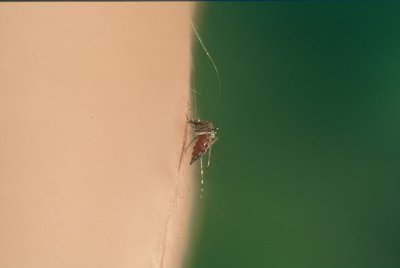
Moustique - Emmanuel Vialet - PNR Camargue  Fauna
FaunaThe Mosquito
There are 40 species of mosquitoes but only ten are biting. Females recover protein from the human blood that are necessary for the maturation of their eggs. They lay thousands of eggs on the soil dried up that are waiting, sometimes years, the rise of the waters to hatch. The mosquito is inconvenient for the man but it is useful to many species: dragonflies, fish, bats ... that feed on them. It is therefore an indispensable link in the Camargue biodiversity.
Description
1 - Cross the small bridge, then head to the left towards the stadium path. Continue and turn left at the turn that allows to cross the other side, do not take the path where there are rocks. Continue straight on and take the path on the right, parallel to the D570.. Continue straight for about 1.5 km.
2 - At the junction with the D570, cross it and continue straight towards Bas des Launes road. Continue for 1 km. After the small bridge, take the path on the left. Continue for about 800 m.
3 - In the bend, turn right onto the dirt road. Continue this path for more than 1 km to reach Petite route du Bac (D85). Turn right at this intersection. Before the intersection with the D570, join the small path on the left. Continue for 350 m. At the next intersection, continue on the left path for 650 m.
4 - Turn left then 150 m after, continue on the first road on the right and continue for more than 1 km. When the path splits in two, follow the path on the right and leave the farmhouse on the left.
5 - At the intersection with the D38A, turn left and take the path on the right. Continue for 1.5 km. At the intersection of the two paths, turn to the right. At the intersection with the D38B, cross this road and continue on the road. Bypass the Gilbert Arnaud manade on the left.
6 - At the intersection with the road to Bergerie du Roure, turn right and follow the first path on the left. Bypass all buildings and technical constructions by the left. Once you reached the Petit-Rhône dike, take a right and continue along the Petit-Rhône. Leave to the right the Château d'Avignon, les Grandes Cabanes du Vaccarès, le Mas de Ventabren et le Mas d'Alivon.
7 - At the pumping station and overpass, turn right onto the D570, cross it and continue towards Paty de la Trinité. Continue to Mas de Bouvet.
8 - Take the left to follow the path of the Méjanes until the directional sign indicating "Méjanes" and "Saintes-Maries-de-la-Mer", follow the direction of Saintes-Maries-de-la-Mer. Then continue on for 11 km.
9 - At the intersection with the D85A, turn left towards Saintes-Maries-de-la-Mer and follow the road on the road side to reach point 1.
- Departure : Tourist Office, les Saintes-Maries-de-la-Mer
- Arrival : Les Saintes-Maries-de-la-Mer
- Towns crossed : Saintes-Maries-de-la-Mer and Arles
Forecast
Altimetric profile
Recommandations
D750, very busy and dangerous road!
Open the gates at the entrance or exit of the paths, think of closing them well.
Crossing the road of the Bergerie du Roure, caution!
Cycling is prohibited on the Rhone and Petit-Rhône dikes..
Caution on the D85A at the exit of the Cinq Gorges towards Saintes-Maries-de-la-Mer.
The itinerary being done in 2 days, think to reserve an accommodation according to the distance to be crossed the first day. Contact the Saintes-Maries-de-la-Mer Tourist Office.
Park your car in a secure location. Be careful, in rainy weather, roads are flooded and impracticable !
Information desks
the Camargue museum
Mas du pont de rousty, 13200 Arles
Remember to visit the Camargue museum! It is located next to the administrative centre of the Camargue Nature Park.
OT Saintes-Maries-de-la-Mer - Tourisme en Camargue
5 Avenue Van Gogh, 13460 Saintes Maries de la Mer
Transport
Access and parking
Parking :
More information
Report a problem or an error
If you have found an error on this page or if you have noticed any problems during your hike, please report them to us here:

